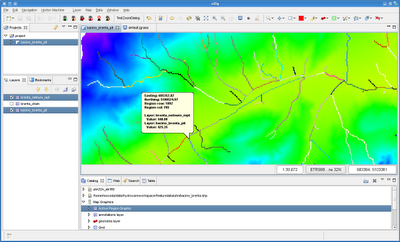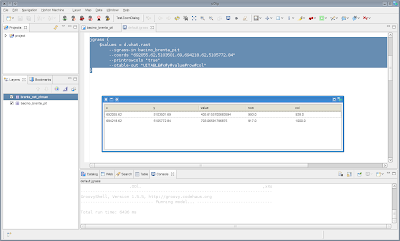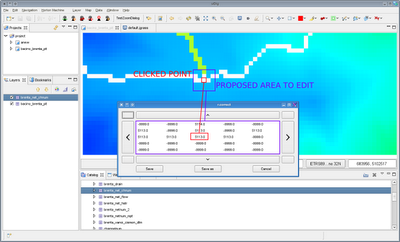With JGrass under the info tools in the gui you can find the "Query tool" or in GRASS language d.what.rast.
By selecting one or more maps you are able to query a particular coordinate to get the raster value for that, together with some useful position info.

Now the same can be achieved from the console with more than one coordinate in order to get a list of coordinates and values to be used in the script:
jgrass {
$values = d.what.rast
--igrass-in bacino_brenta_pit
--coords "692055.62,5103501.69,694218.62,5105772.84"
--printrowcols "true"
--otable-out "UITABLE#x#y#value#row#col"
}
will gain:

r.correct
In the same info icon menu you can find the Correct tool, or better known as r.correct.
Even if some of you might find it useless, some of us will need it for everyday's work. It gives the possibility to correct manually pixel values of a raster map.
For example here I have a map with a river (which pixels contain the channelnumber) network over an elevation model map. Note that the river map has novalues were there is no river.
If I click with the r.correct tool on a point on the river network, a dialog with a table containing the raster values opens and I am able to change those values and save the map (overwriting the old or creating a new one).
Note also that you have buttons all around the table that let you navigate the raster, if there are other values around you want to change.
The same of above by image:
1) click the point on the network in the area you want to change:

2) change the value of the pixel you want to change. In this case let's just split the network arm from the main network. Split means set a value to novalue, which by default is -9999.0:

3) save and hit refresh to redraw the map. The river is split:

No comments:
Post a Comment